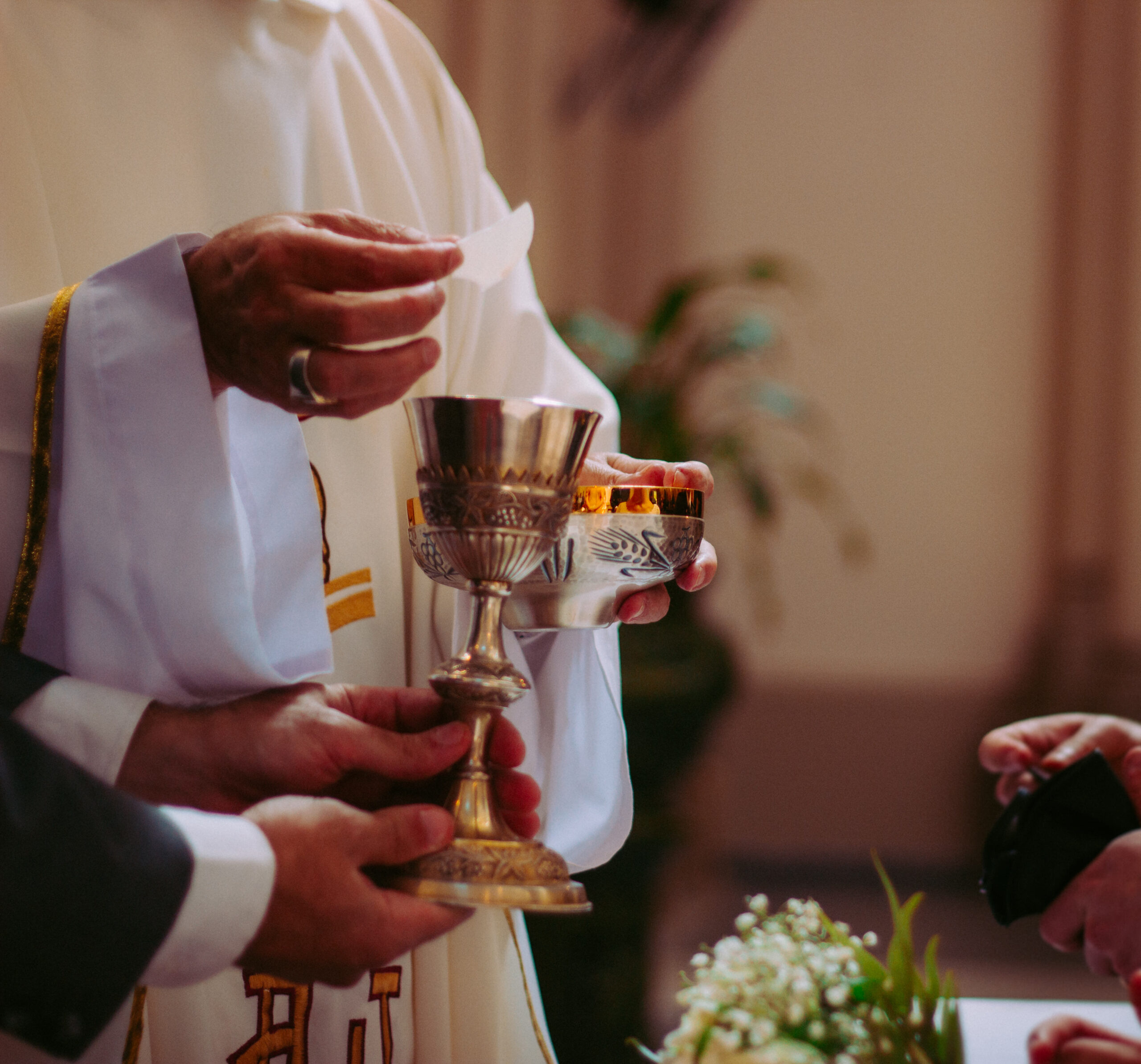A listener named Alan asks Father Dave if he did something wrong at Mass the other day when he ‘dunked’ the host into the wine. He says, “I don’t know why I can’t do it… I thought when I was getting communion in the ’70s and ’80s, they had these things [intinction sets consisting of a plate or bowl with a matching cup] made just for that, so I’m calling you to ask, what’s the proper protocol? Are there rules against it?”
Father Dave responds by saying there was a time in the past, as recently as 2010 when the act of dipping the host into the consecrated wine was an accepted practice. “The term that we use with respect to the Eucharist is called intinction,” Father Dave explains, “which is just a fancy word that means you take the host and dip it in the consecrated wine.”
Father Dave explains that intinction was broadly used for a time after the Second Vatican Council until recently when changes were made. It is no longer allowed to be done by the communicant (the person receiving communion). He clarifies that priests, however, are allowed to intinct the host.
Alan explains that he was scolded by the Eucharistic Minister at Mass for doing this and told he couldn’t do it because his hands were dirty and they shouldn’t touch the precious blood.
Father Dave explains that the Eucharistic Minister was correct in telling him he is not allowed to dip the host into the wine, but was wrong in his reasoning. “The danger that the Church would like to avoid is that if you intinct the host into the chalice with the precious blood, there’s still a fair likelihood that a drop of the precious blood would hit the floor. That’s what we don’t want. That’s why that’s not allowed.”
“One other reason intinction is not allowed,” Father Dave continues, “is because many parishes these days are more concerned about somebody just not consuming the host right there after you’ve received it from the communion Minister – because of the possibility of somebody taking it back to their pew or taking it home for sacrilege or whatever… I’ve even seen parishes where next to the communion Minister is an usher, making sure somebody consumes right away.”
